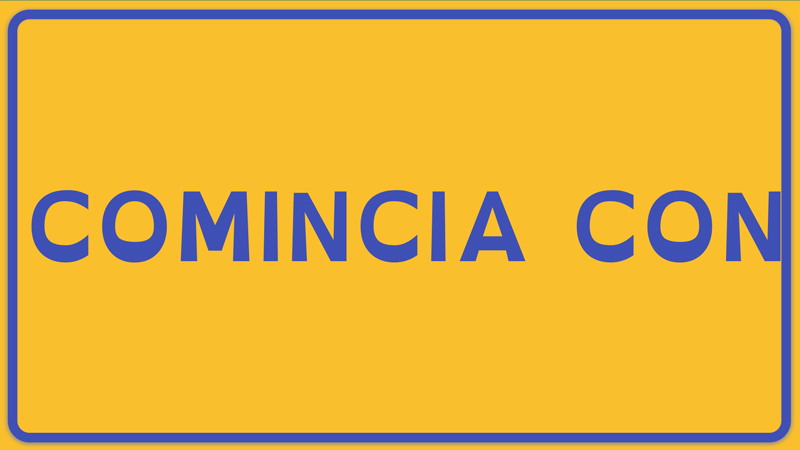
Empieza con...
it(En italiano) Actividad en la que debemos seleccionar la palabra que corresponda con la primeras letras propuestas.


(En italiano) Actividad en la que debemos seleccionar la palabra que corresponda con la primeras letras propuestas.
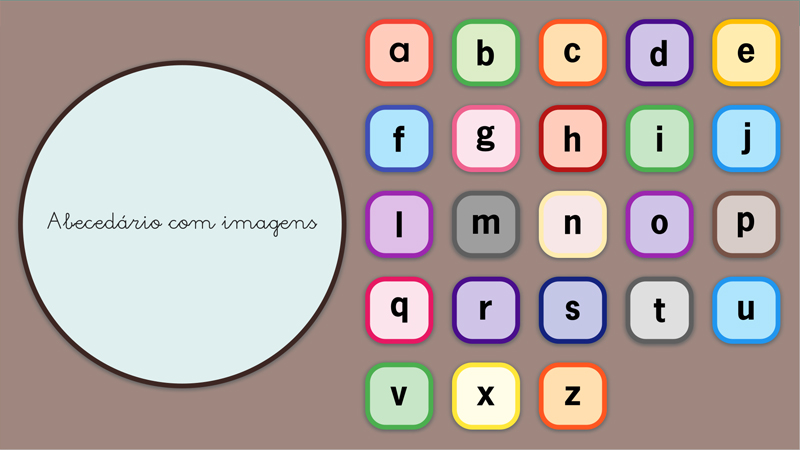
(En portugués) Es un recurso a través del cual trabajaremos las letras del abecedario asociando su sonido con el de diferentes objetos que comienzan con cada una de las letras, lo que ayudará a entender que cada palabra está compuesta por diferentes sonidos y que cada fonema ( letra) tiene su propio sonido.

El tablero “Abecedario con Imágenes” complementa la actividad subida con anterioridad, “Vocales con Imágenes”. Como explicábamos en el anterior, se trata de un recurso mediante el cual trabajaremos las letras del abecedario asociando su sonido al de diferentes objetos que comienzan por cada una de las letras, lo que ayudará en la comprensión de que cada palabra se compone de diferentes sonidos y que cada fonema (letra) tiene su propio sonido.

Durante el aprendizaje de la lectura es necesario que se pongan en marcha estrategias de reflexión sobre la composición de las palabras y los texto, es lo que denominamos conciencia fonológica. Como sabemos, esta se compone de diferentes niveles, entre ellos, la conciencia silábica, que hace referencia al reconocimiento de las sílabas que componen una palabra. Con la ayuda de este recurso, podremos trabajar la conciencia silábica mediante la identificación de las sílabas que forman las diferentes palabras que se presentan. El recurso cuenta con diversas palabras bisílabas, trisílabas y polisílabas organizadas en niveles para que podamos decidir qué palabras trabajar.
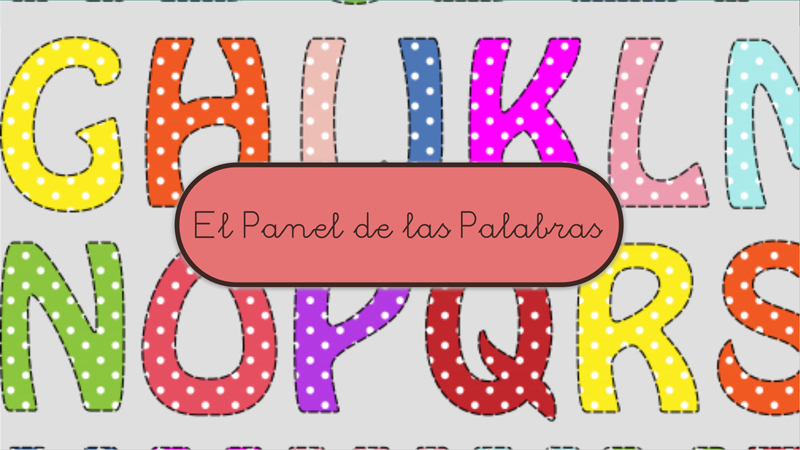
El Panel de las Palabras es una adaptación del juego “Pasapalabra”. Con este tablero, directamente relacionado con la competencia lingüística, podremos trabajar vocabulario, familia de palabras, campos semánticos, categorías gramaticales, reglas ortográficas, definiciones y/o cualquier tipo de vocabulario o área. El juego, tal y como está para descargarlo, cuenta con una serie de preguntas, por letra del abecedario, en las que tendremos que decir de qué palabra se trata. Pero podemos adaptarlo para trabajar las diferentes áreas y competencias que estimemos oportuno, con solo modificar las preguntas. No solo se trata de un recurso versátil para trabajar las competencias educativas, sino que es perfectamente adaptable para poder utilizarlo en intervención con personas adultas, en estimulación cognitiva y en el trabajo y desarrollo de las funciones ejecutivas.

El “Concurso de Palabras” es una adaptación del juego “Deletrea”. Con este recurso, útil para usarlo como juego o como actividad evaluativa y/o de diagnóstico, trabajaremos la formación de las palabras. La formación de palabras es un elemento esencial en los procesos de aprendizaje de la lectoescritura y de desarrollo de la conciencia fonológica. Entender que una palabra se divide en unidades más pequeñas, que unidas entre sí forman un todo con sentido y significado, abre el camino para el aprendizaje de procesos posteriores de suma importancia para el desarrollo y el aprendizaje de los/as niños/as. Además de brindarnos la posibilidad de utilizarlo como recurso de apoyo en procesos de evaluación del lenguaje y del aprendizaje de la lectura. No solo se trata de una actividad para trabajar con niños/as, también podemos utilizarla en el trabajo de la estimulación cognitiva con personas mayores.

(En italiano) Actividad interactiva sobre el uso de los acentos en italiano.

(En italiano) Actividad interactiva para seleccionar la forma correcta de escribir una serie de palabras en italiano.

Tablero basado en el juego “¿Quién es quién?”. A través de este recurso, podremos jugar, de manera interactiva y guiada, a este conocido juego. La mecánica del juego cambiará un poco, ya que el/a profesional debe colocar, de manera visible y accesible para el/a usuario/a el panel con todos los personajes que tiene el juego. De esta manera, el/a usuario podrá ir realizando las preguntas que quiera, a través de su tablero, hasta llegar al personaje previamente elegido por el/a profesional. En el propio recurso encontraréis las instrucciones. Gracias a la posibilidad que nos brinda Verbo de imprimir las páginas, contextos o niveles de los tableros, podremos tener, de manera física y accesible, la página con los personajes.
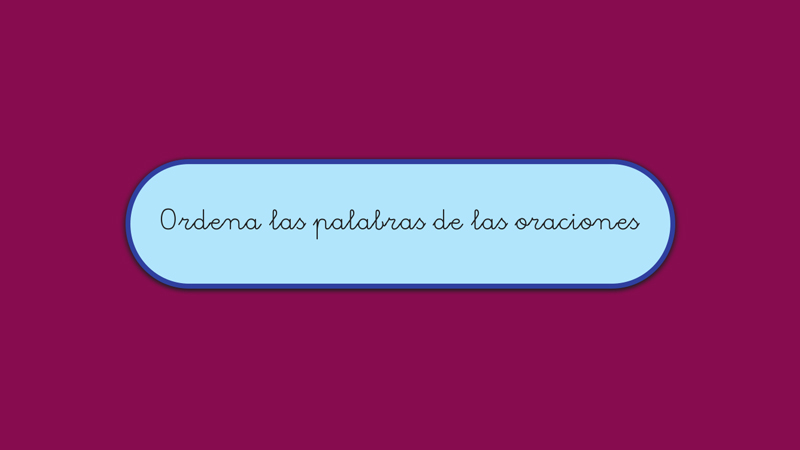
La conciencia fonológica es la capacidad para reconocer, reflexionar, utilizar y manipular, de manera consciente, los sonidos y segmentos de los que se compone el lenguaje. Podemos trabajarla desde todos sus niveles, conciencia léxica, conciencia silábica, conciencia fonémica y/o conciencia semántica. A través de la colección de tableros que podréis descargar desde el archivo zip que se adjunta, podremos trabajar la conciencia léxica y semántica. El archivo contiene cinco tableros con ejercicios para ordenar las partes de las oraciones: Tres de ellos, divididos en diferentes niveles, que guardarán las respuestas en la propia actividad además de generar un pdf con los resultados. Estos tableros se basan en una representación del lenguaje mixta, es decir, utilizando texto y pictogramas para cada palabra. Dos de ellos, basados en una representación del lenguaje textual y divididos por niveles, los cuales también guardarán las respuestas de los/as usuarios/as además de generar un pdf con los resultados.

Tablero para trabajar la conciencia fonológica mediante la conciencia silábica y la división, en sílabas, de palabras trisílabas. Este tablero puede utilizarse como juego, como actividad de clase y como actividad evaluable, ya que guarda las respuestas de los usuarios, tanto en el propio tablero como en un archivo PDF.

Tablero para trabajar la conciencia fonológica a través de la conciencia silábica y la división, en sílabas, de palabras bisílabas. Este tablero puede utilizarse como juego, como actividad de clase y como actividad evaluable, ya que guarda las respuestas de los usuarios, tanto en el propio tablero como en un archivo PDF.

Actividad para trabajar diferentes familias de palabras a través del juego del bingo.

Tablero para aprender el alfabeto dactilológico con símbolos de https://www.fundacioncnse.org/educa/bancolse/dactilologico.php con licencia Creative Commons Attribution-NonCommercial-ShareAlike sobre los que se han realizado algunos cambios.

Panel de comunicación de introducción a la fecha

Tablero para trabajar comprensión de la partícula interrogativa "¿Qué?"

(En portugués) Actividad con veinte pictogramas que representan palabras de varias sílabas. La actividad consiste en descubrir con qué sílaba comienza la palabra que representa cada uno de estos pictogramas. Las respuestas se guardan a medida que avanza la actividad. Al final de la actividad, existe una página con las respuestas dadas por el usuario y las respuestas correctas y también existe la opción de guardar esas respuestas en PDF.

(En portugués) ¿Qué palabra falta para completar la frase?

(En portugués) Observa y escucha las imágenes y elige la vocal correspondiente.

(En portugués) Actividad para asociar la imagen que aparece con su nombre.

(En portugués) Actividad interactiva para trabajar la lectura global. Las palabras se dividen en tres categorías: alimentos, herramientas y acciones. Consiste en identificar la palabra que corresponde a cada pictograma, eligiendo entre dos posibles opciones.
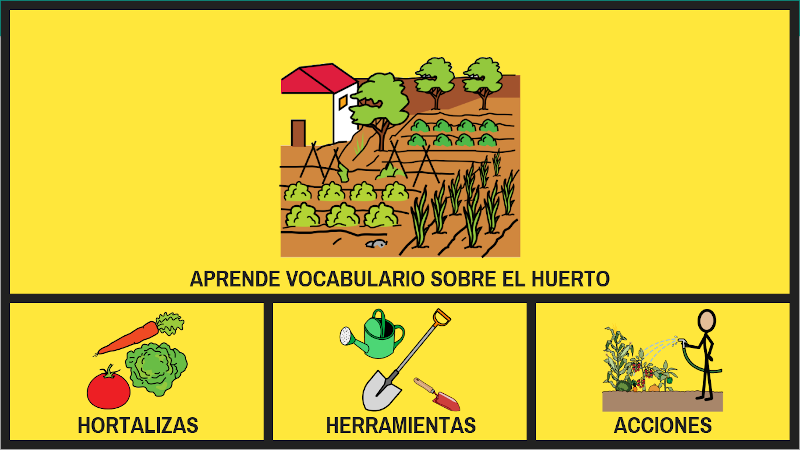
Se trata de una actividad interactiva para trabajar la lectura global. Las palabras están divididas en tres categorías: alimentos, herramientas y acciones. Consiste en identificar la palabra que se corresponde con cada pictograma, escogiendo entre dos opciones posibles.

Tablero sencillo para aprender el vocabulario de los diferentes materiales que podemos encontrar en el taller de manualidades, además, incluye una actividad de asociación donde hay que relacionar uno de esos materiales con la acción que corresponda.

Consiste en averiguar cómo termina cada uno de los refranes que se plantean. Es una actividad que se puede realizar de manera individual o en grupo. Deben buscar en su memoria la terminación de cada refrán y contar el significado que creen que tiene. Podéis quitar y añadir cuántos refranes queráis.

Consiste en identificar el nombre de varios cantantes, actores y actrices nacidos a lo largo del siglo XX en España. Al final de la actividad, podéis escuchar una canción de cada uno de los cantantes que aparecen. Pretende evocar en los usuarios experiencias pasadas.

Se trata de una actividad de identificación donde el usuario tiene que elegir entre dos opciones la respuesta correcta, tiene una melodía de fondo y cuando acierta, pasa a la siguiente provincia tras recibir un refuerzo positivo.

Actividad con veinte pictogramas que representan palabras de dos sílabas. La actividad consiste en averiguar cuál es la sílaba por la que empieza la palabra que representa cada uno de esos pictogramas. Las respuestas se van guardando a medida que se avanza en la actividad. Al final del tablero, hay una página con las respuestas dadas por el usuario y las respuestas correctas, existe la opción de guardar dichas respuestas en un archivo PDF.

Es un tablero que contiene veinte pictogramas que representan palabras de dos sílabas. La actividad consiste en averiguar cuál es la sílaba en la que termina la palabra que representa cada uno de esos pictogramas. Las respuestas se van guardando a medida que se avanza en la actividad. Al final del tablero, hay una página con las respuestas dadas por el usuario y las respuestas correctas, existe la opción de guardar dichas respuestas en un archivo PDF.

(En italiano) Intenta descubrir qué palabras son inventadas y cuáles son reales.

(En italiano) Actividad para asociar la imagen que aparece con su nombre.

(En italiano) Identifica la palabra que sobra dentro de la frase.

(En italiano) ¿Qué día es hoy? ¿Qué hora es? ¿Qué tiempo hace?
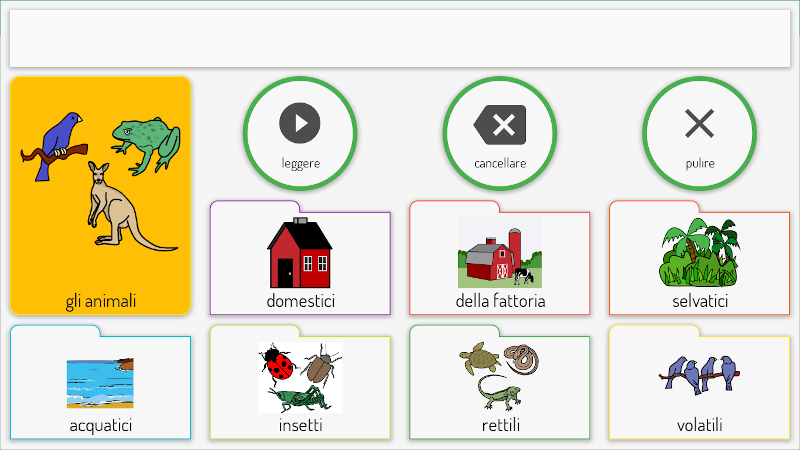
(En italiano) Animales domésticos, salvajes y de granja. Dónde viven y sus características.

(En italiano) ¿Qué palabra falta para completar la frase?
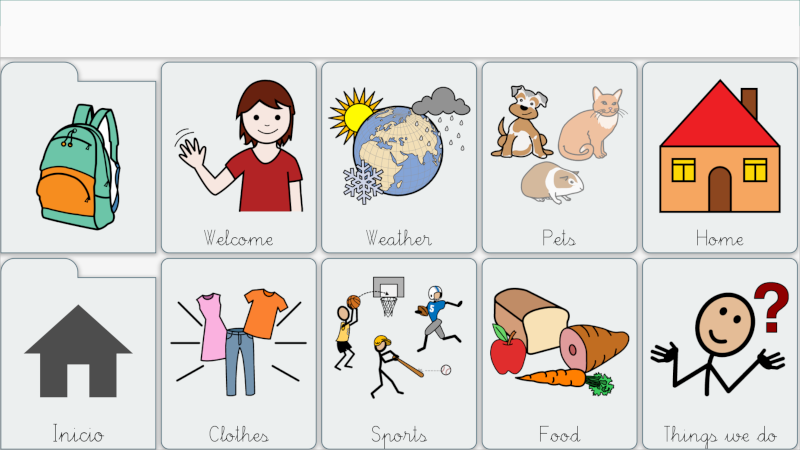
Temario de 3º de Primaria de la asignatura "Inglés".

(En inglés) Practica tu vocabulario en inglés con esta terrorífica actividad.

¿Puedes encontrar la palabra que rima? Esta versión muestra al final una página con las respuestas esperadas y las del usuario.

Ordena los grupos de tres letras por orden alfabético. Al final se muestra una página con los resultados esperados y las respuestas del usuario.

Descubre a qué categoría semántica corresponde la imagen que aparece. Al final se muestra una página con las respuesta del usuario y los resultados correctos.

Intenta descubrir qué palabras son inventadas y cuáles son reales. Esta versión guarda las respuestas del usuario en capa página como archivos pdf.

Ordena las palabras para crear una frase.
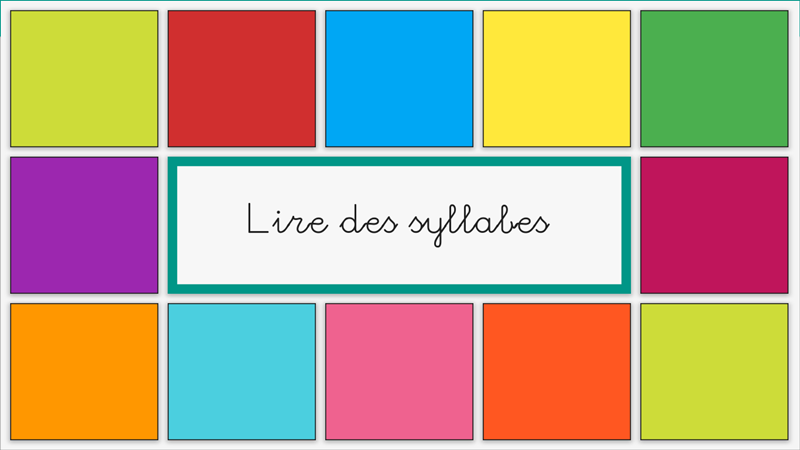
(En francés) Escribe las sílabas que forman la palabra indicada para pasar al siguiente nivel.
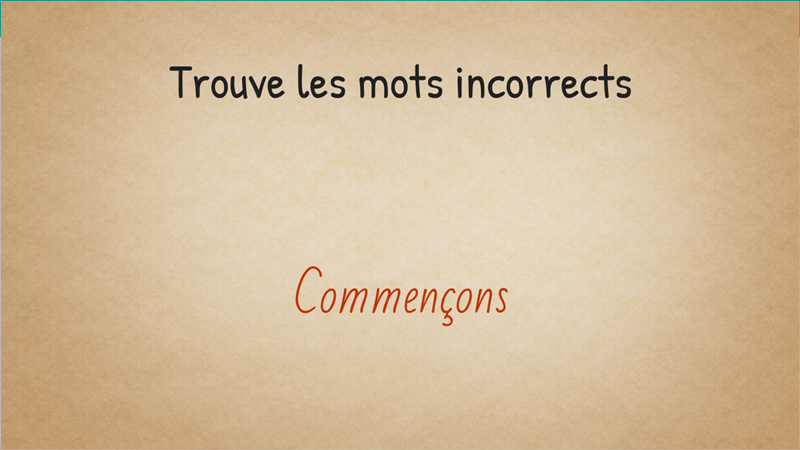
(En francés) Intenta descubrir qué palabras son inventadas y cuáles son reales.

(En francés) Animales domésticos, salvajes y de granja. Dónde viven y sus características.

(En francés) Actividad para asociar la imagen que aparece con su nombre.

(En francés) ¿Qué palabra falta para completar la frase? Usa las pictogramas para ayudarte.

Elige la palabra escrita que se corresponde con la imagen, trabajando en las letras P, M y S.

Elige la palabra escrita que se corresponde con la imagen, trabajando en las letras P y M.

Elige la palabra escrita que se corresponde con la imagen, trabajando en la letra P.

Elige el mejor adjetivos calificativo para las palabras dadas.

Aprende sobre las categorías de las palabras. La mejor forma de mejorar el uso de tu comunicador.

Observa y escucha las imágenes y elige la vocal correspondiente.
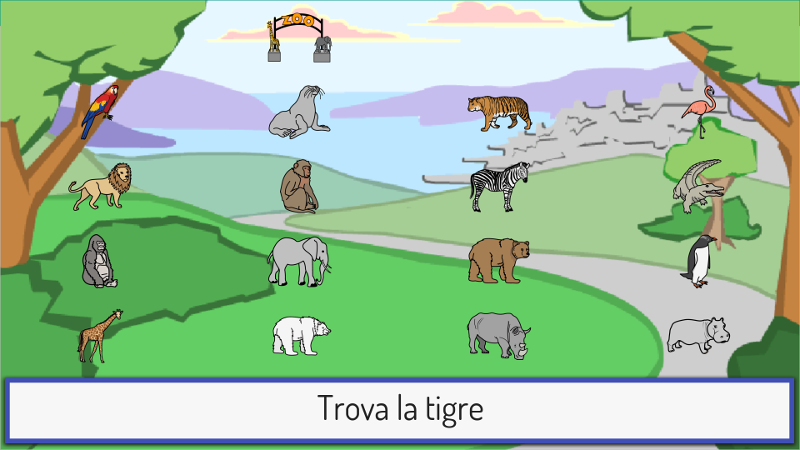
(En italiano) ¡Aprende sobre 16 animales salvajes! Encuentra el animal indicado y descubre sus características.

(En italiano) ¿Cuántas mariquitas hay? Tablero de actividad en italiano para seleccionar la cantidad correspondiente con ayuda visual de pictogramas: pocas, muchas, una o ninguna.

(En italiano) Elección del antónimo correspondiente para una palabra.

(En italiano) Tablero de actividad sobre la elección del sinónimo correspondiente para una palabra.

(En Tablero de actividad de preguntas-respuestas sí/no. Debes seleccionar si el animal representado hiberna o si emigra.

(En italiano) Simple ejercicio de comprensión de lectura con varias respuestas. Favorece la atención auditiva y la memoria a corto plazo.

(En italiano) Tablero de actividad sobre la elección del mejor adjetivo calificativo para una palabra.

¿Quién es quien? Actividad para manejar los términos y relaciones de parentesco. Cambia los pictogramas por tus propias fotografías y habla sobre los miembros de tu familia.
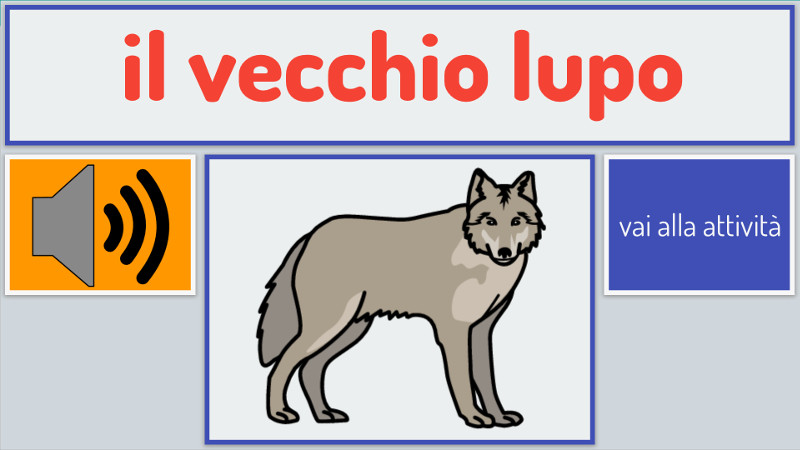
(En italiano) El viejo lobo en italiano. Ejercicio de comprensión lectora que favorece la atención auditiva y la memoria a corto plazo.

(En italiano) Simple reading exercise and multiple choice questions

Para conmemorar el Día internacional sobre la Concienciación del Trastorno Específico del Lenguaje (TEL), hoy 30 de Septiembre lanzamos este nuevo tablero con cuatro actividades diseñadas para cada dimensión lingüística: Fonológica - Identifica el fonema /ñ/ o /ll/.Semántica - Describe el objeto. Morfosintáctica - Ordena las palabras para formar una frase.Pragmática - Crea tu propio cuento y grábalo con tu voz.¡Crea más niveles y personaliza la actividad!

(En inglés) Este juego facilita el aprendizaje de nuevos símbolos Bliss en el vocabulario. Escucha la palabra que se indica para buscar su fotografía real y su símbolo. Adaptado para su uso con voz en inglés.

Actividad de iniciación al análisis sintáctico. Lee la frase y localiza la acción que se lleva a cabo en cada una de ellas.

Aprendemos más sobre nuestros cinco sentidos de forma visual y con ejemplos de actividades cotidianas. En este tablero se utilizan pictogramas de Arasaac y Symbolstix en combinación con texto.

Con este juego será más fácil introducir nuevos pictogramas en el vocabulario. Escucha la palabra que se indica para buscar su fotografía real y su pictograma correspondiente.

Escribe las sílabas que forman la palabra indicada para pasar al siguiente nivel.

Versión del tablero Comparar animales con sonidos reales de animales.

Intenta descubrir qué palabras son inventadas y cuáles son reales.

Identifica la palabra que sobra dentro de la frase.

¿Puedes encontrar la palabra que rima?

Animales domésticos, salvajes y de granja. Dónde viven y sus características.
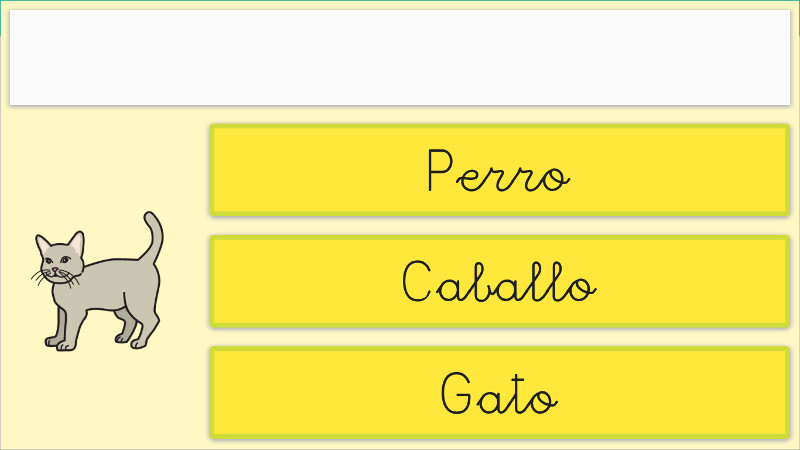
Actividad para asociar la imagen que aparece con su nombre.

¿Qué palabra falta para completar la frase? Usa las pictogramas para ayudarte.